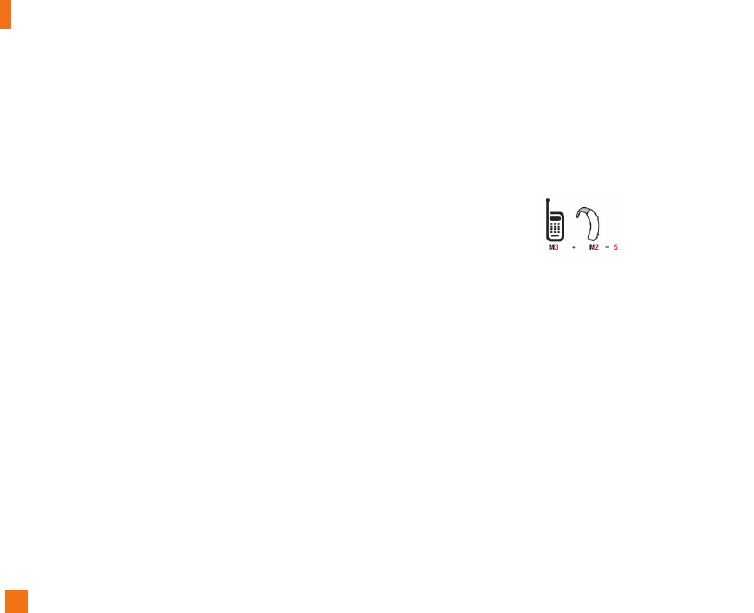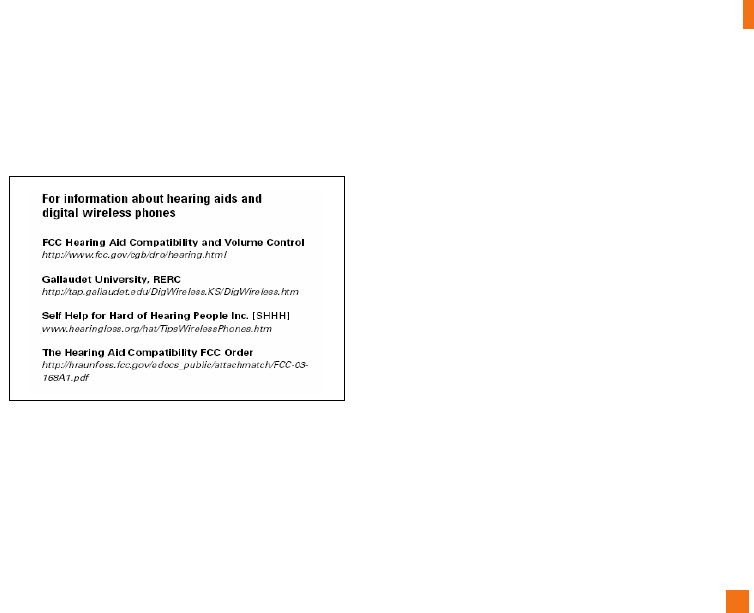LG Electronics USA L1400 Dual-Band GSM Phone User Manual L1400i Cingular ENG 0914 sp
LG Electronics USA Dual-Band GSM Phone L1400i Cingular ENG 0914 sp
Contents
- 1. Users Manual
- 2. Users Manual Addendum
Users Manual Addendum

95
Safety Guidelines
evaluated as in compliance with the FCC RF emission
guidelines. SAR information on this model phone is on
file with the FCC and can be found under the Display
Grant section of http://www.fcc.gov/oet/fccid after
searching on FCC ID BEJL1400i.
Additional information on Specific Absorption Rates
(SAR) can be found on the Cellular
Telecommunications Industry Association (CTIA)
website at http://www.wow-com.com
*In the United States and Canada, the SAR limit for
mobile phones used by the public is 1.6 watts/kg
(W/kg) averaged over one gram of tissue. The
standard incorporates a substantial margin of safety
to give additional protection for the public and to
account for any variations in measurements.
FCC Hearing-Aid Compatibility (HAC)
Regulations for Wireless Devices
On July 10, 2003, the U.S. Federal Communications
Commission (FCC) Report and Order in WT Docket 01-
309 modified the exception of wireless phones under
the Hearing Aid Compatibility Act of 1988 (HAC Act) to
require digital wireless phones be compatible with
hearing-aids. The intent of the HAC Act is to ensure
reasonable access to telecommunications services for
persons with hearing disabilities.
While some wireless phones are used near some
hearing devices (hearing aids and cochlear implants),
users may detect a buzzing, humming, or whining
noise. Some hearing devices are more immune than
others to this interference noise, and phones also vary
in the amount of interference they generate.
The wireless telephone industry has developed a
rating system for wireless phones, to assist hearing
device users find phones that may be compatible with
their hearing devices. Not all phones have been rated.
Phones that are rated have the rating on their box or a
label located on the box.
The ratings are not guarantees. Results will vary

96
Safety Guidelines
depending on the user’s hearing device and hearing
loss. If your hearing device happens to be vulnerable
to interference, you may not be able to use a rated
phone successfully. Trying out the phone with your
hearing device is the best way to evaluate it for your
personal needs.
M-Ratings: Phones rated M3 or M4 meet FCC
requirements and are likely to generate less
interference to hearing devices than phones that are
not labeled. M4 is the better/higher of the two ratings.
LG GSM phones operate in both the 850 MHz and the
1900 MHz bands in the United States. Pursuant to a
waiver granted by the FCC, the M rating for these
phones is based on the performance of the phone in
the 1900 MHz band. Hearing aid compatibility in the 850
MHz band for GSM phones may or may not be as good
as that obtained in the 1900 MHz band. If the hearing
aid compatibility of this phone proves to be
unacceptable during initial use, contact your
communications service provider for details of the
provider’s return policies.
Hearing devices may also be rated. Your hearing
device manufacturer or hearing health professional
may help you find this rating. Higher ratings mean that
the hearing device is relatively immune to interference
noise. The hearing aid and wireless phone rating
values are then added together. A sum of 5 is
considered acceptable for normal use. A sum of 6 is
considered for best use.
In the above example, if a hearing aid meets the M2
level rating and the wireless phone meets the M3 level
rating, the sum of the two values equal M5. This should
provide the hearing aid user with “normal usage”
while using their hearing aid with the particular
wireless phone. “Normal usage” in this context is
defined as a signal quality that is acceptable for
normal operation.
The M mark is intended to be synonymous with the U
mark. The T mark is intended to be synonymous with
the UT mark. The M and T marks are recommended by
the Alliance for Telecommunications Industries
Solutions (ATIS). The U and UT marks are referenced
in Section 20.19 of the FCC Rules. The HAC rating and
measurement procedure are described in the

97
Safety Guidelines
American National Standards Institute (ANSI) C63.19
standard.